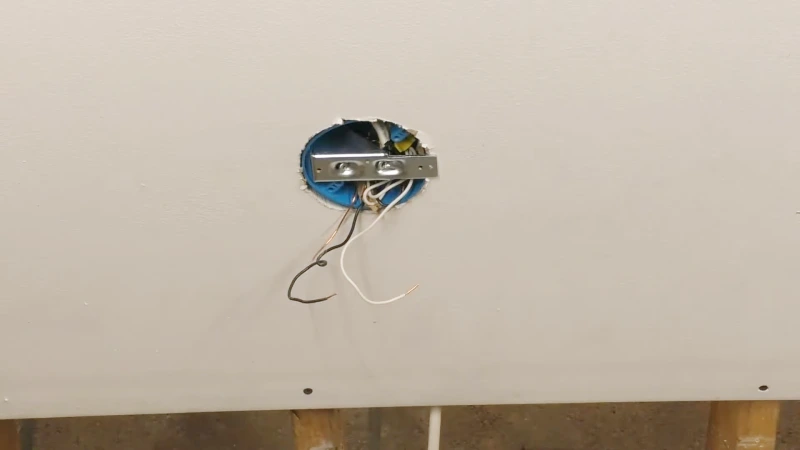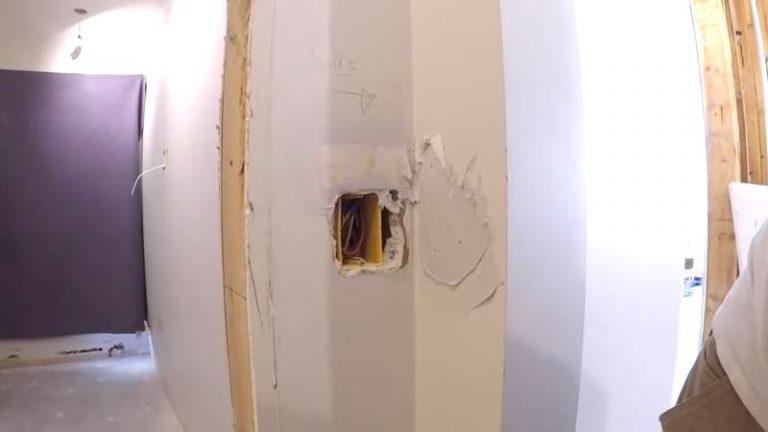Why the Mounting Bracket Doesn’t Fit Junction Box?

Installing a light fixture can seem like a simple task, but it’s important to ensure that everything is properly aligned and secured to avoid any accidents or damage. One common issue that can arise during the installation process is when the mounting bracket doesn’t fit the junction box.
This can be frustrating and may seem like a roadblock, but there are steps that can be taken to resolve the issue and properly install the light fixture. In this article, we will explore the causes of this problem and provide possible solutions to ensure a successful and safe installation.
Mounting Bracket Doesn’t Fit Junction Box
It sounds like the mounting bracket that came with your vanity light is not compatible with the junction box that is installed in your bathroom. One possible solution is to replace the junction box with a different type of box that is compatible with the mounting bracket, such as a metal box.
Another option is to install a crossbar or mounting plate directly to the joists or studs using wood screws, and then attach the vanity light to the crossbar or mounting plate. If you are unsure how to proceed, it is always a good idea to consult with a licensed electrician or follow the manufacturer’s instructions for installation.
Causes of Incompatibility
There are several reasons why a mounting bracket may not fit a junction box.
Incompatibility
One of the main causes of incompatibility is the fact that there are many different types of junction boxes and mounting brackets available on the market.
In this case, you may need to purchase a new mounting bracket that is compatible with your junction box. It’s also possible that both the junction box and the mounting bracket are incorrect for each other, in which case you may need to replace both to ensure a proper fit.
Wrong Size
Another possibility is that the junction box itself is the wrong size or type for the mounting bracket.
Different light fixtures and mounting brackets may require specific sizes and types of junction boxes, so it’s important to make sure that the box you are using is compatible with your fixture. Another cause could be that the mounting bracket itself is the incorrect size or type for the junction box.
These different types may have different sizes, shapes, and mounting methods, which can make it difficult to find a bracket that is compatible with a particular junction box. Another cause of incompatibility is the incorrect sizing or design of the junction box or mounting bracket.
For example, if the junction box is too small or the mounting bracket is too large, they may not be able to fit together properly. Similarly, if the junction box or mounting bracket has a different design or mounting method than what is required, it may not be able to be used with the other component.
Possible Solutions
There are several possible solutions for when a mounting bracket does not fit a junction box.
Get Compatible One
One solution is to replace the junction box with a different type of box that is compatible with the mounting bracket.
For example, if the existing junction box is a “pancake” type that is not intended to support the weight of the light fixture, you may need to install a different type of box, such as a metal box, that is capable of supporting the fixture.
Install a Crossbar or Mounting Plate
Another solution is to install a crossbar or mounting plate directly to the joists or studs using wood screws, and then attach the light fixture to the crossbar or mounting plate. This can be a good option if the existing junction box is not compatible with the mounting bracket and cannot be easily replaced.
Modify the Junction Box
Another solution is to modify the junction box or mounting bracket to fit each other. This may involve drilling additional holes or using adapters to make the components compatible. If you are unsure how to proceed, it is always a good idea to consult with a licensed electrician for professional assistance.
Rotate the Junction Box
Another option is to rotate the junction box so that the screw holes align with the nearest stud and install the fixture’s mounting plate using wood screws.
This may be possible if the junction box is not already mounted in a fixed position and if there is enough excess cable to allow for rotation. Another solution is to replace the junction box with a metal one that is compatible with the mounting bracket.
This option may be necessary if the junction box is damaged or if it is not capable of supporting the weight of the light fixture. When replacing the junction box, be sure to use the slotted holes to ensure that the mounting bolts are level.
Tips for Prevention
To prevent the problem of a mounting bracket not fitting a junction box, there are several tips you can follow:
- Measure and confirm proper sizing before purchasing a light fixture and mounting bracket. Make sure that the dimensions of the junction box and the mounting bracket are compatible with each other.
- Check the manufacturer’s instructions for compatibility with different types of junction boxes. Many light fixtures and mounting brackets are designed to work with specific types of junction boxes, so it is important to follow the manufacturer’s recommendations.
- Consider hiring a professional electrician to ensure proper installation. A licensed electrician will have the knowledge and expertise to properly install the light fixture and ensure that it is securely attached to the junction box. This can help to prevent any issues with the mounting bracket not fitting the junction box.
- Use the correct tools and equipment for the job. Make sure you have the proper tools and equipment on hand to install the light fixture, including a drill, screwdriver, wire stripper, wire nuts, and any other tools recommended by the manufacturer.
- Follow proper installation procedures. Carefully read and follow the manufacturer’s instructions for installing the light fixture and mounting bracket. Make sure you understand how the components fit together and how to attach them to the junction box.
- Check the condition of the junction box. Before installing the light fixture, inspect the junction box to make sure it is in good condition and free of any damage or defects. If the junction box is damaged, it may not be able to support the weight of the light fixture and could cause problems with the mounting bracket.
- Use a mounting bracket that is designed for your specific light fixture. Some mounting brackets are designed to work with specific types of light fixtures, such as recessed lights or pendant lights. Make sure you are using the correct mounting bracket for your light fixture.
- Choose a junction box with adequate size and capacity. The junction box should be large enough to accommodate the light fixture and mounting bracket, as well as have the capacity to handle the electrical load of the light fixture. If the junction box is too small or has insufficient capacity, it may not be able to support the light fixture.
How to Install a Mounting Bracket to Junction Box Properly?
Here are a few additional tips that may be helpful when installing a light fixture:
Turn Off the Power
Before starting any electrical work, it is essential to turn off the power to the circuit you will be working on to avoid any accidents or injuries.
Check for Any Damage
Inspect the junction box and mounting bracket for any signs of damage or wear before proceeding with the installation. If either is damaged, it may be necessary to replace them before continuing.
Use Wire Connectors
If you need to splice or connect wires during the installation process, be sure to use wire connectors to ensure a secure and safe connection.
Test the Fixture Before Installation
If possible, it can be helpful to test the light fixture before fully installing it to ensure that it is functioning properly.
Follow Local Codes and Regulations
Make sure to adhere to any local codes and regulations regarding electrical work and installation of light fixtures.
Use a Level
To ensure that the light fixture is properly aligned, use a level during the installation process to ensure that it is straight and even.
Tighten All Connections
It’s important to ensure that all connections are tightened securely to prevent any looseness or instability.
By following these tips, you can help to ensure a smooth and successful installation process for your light fixture.
Conclusion
In conclusion, when a mounting bracket does not fit a junction box, there are several possible solutions available. These solutions include replacing the junction box with a compatible one, installing a crossbar or mounting plate to attach the light fixture to the joists or studs, modifying the junction box or mounting bracket to fit each other, or consulting with a licensed electrician for professional assistance.
If your mounting bracket doesn’t fit the junction box, it could be due to mismatched sizes or improper installation. Ensure you’re using the correct bracket for your junction box and follow the manufacturer’s instructions carefully.
While troubleshooting this issue, consider other electrical projects. For example, learning whether SER cable can be exposed can help you make safer wiring decisions. Additionally, understanding how to handle a junction box that’s too big for a light fixture can save you time and effort. For more tips, check out our guide on why plastics block outlets.


